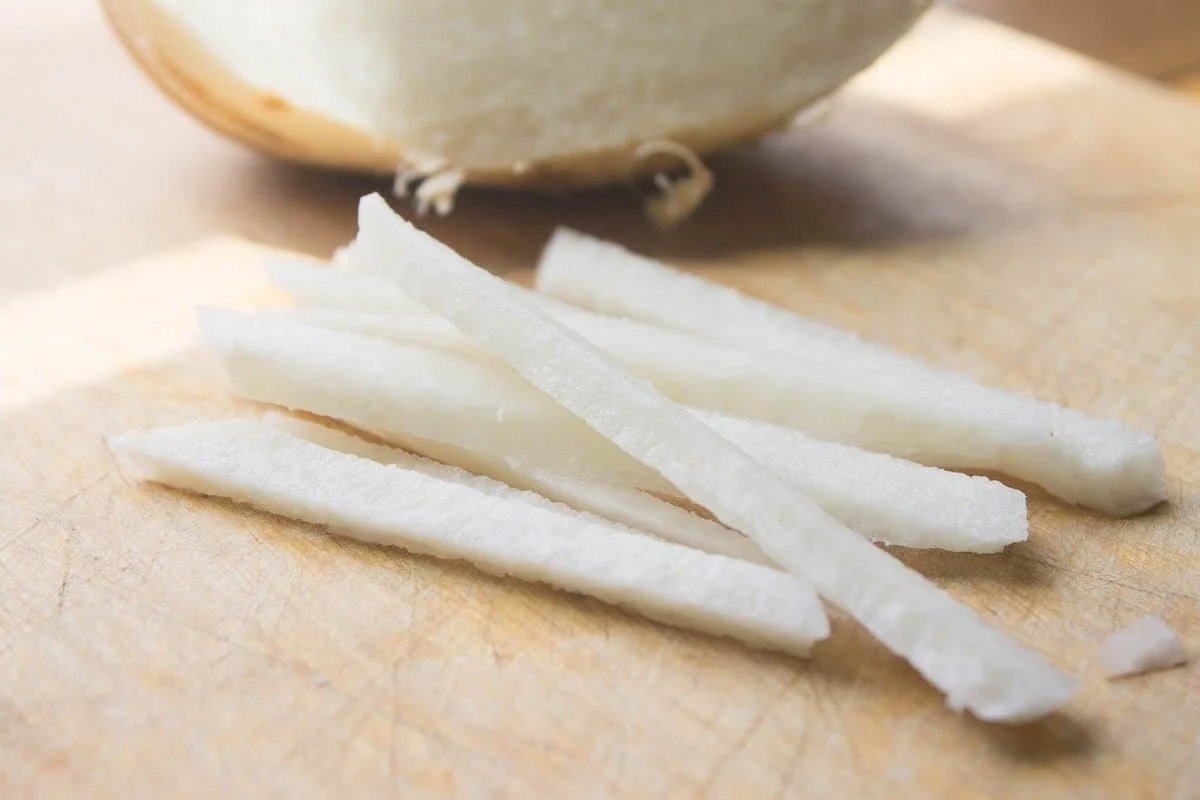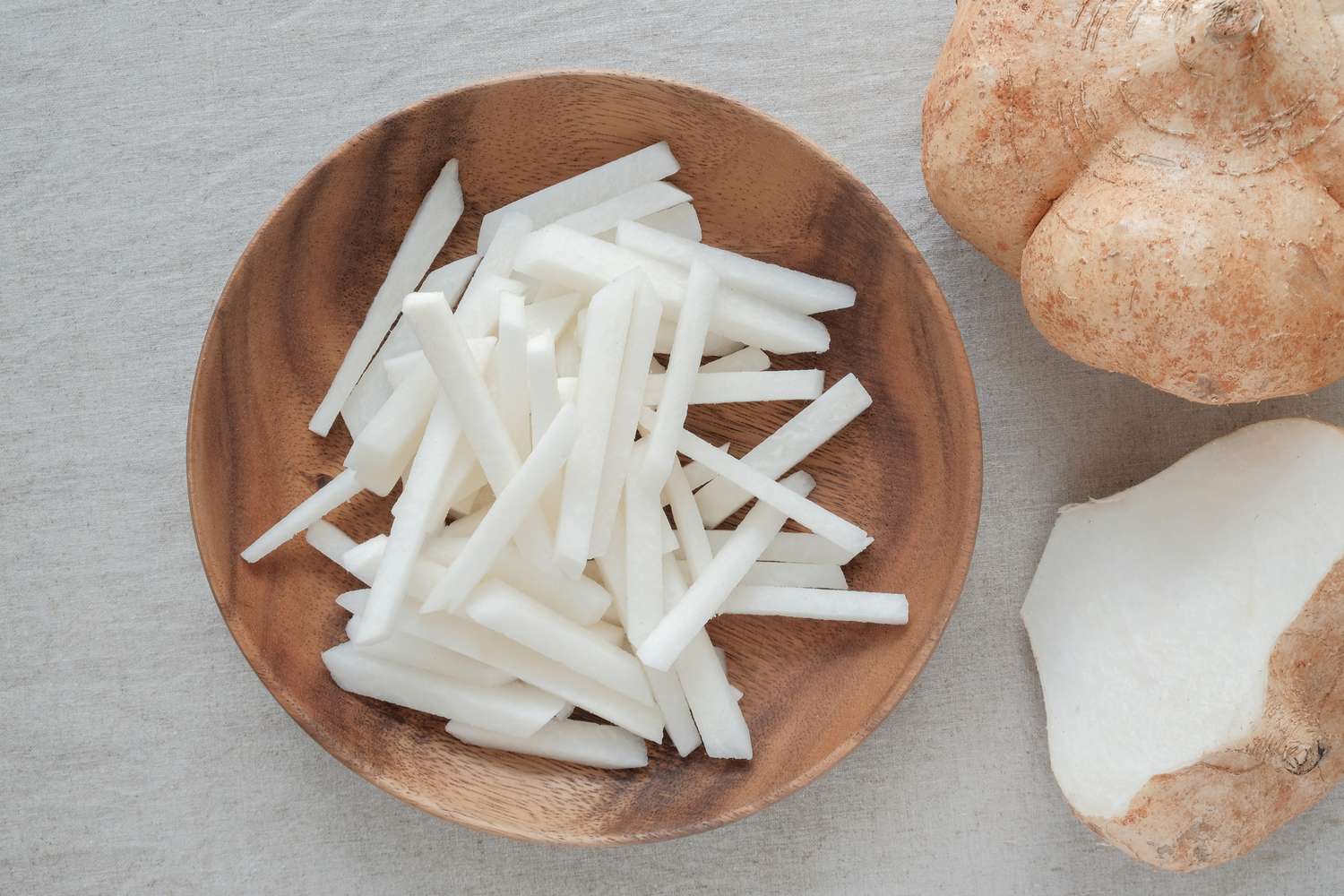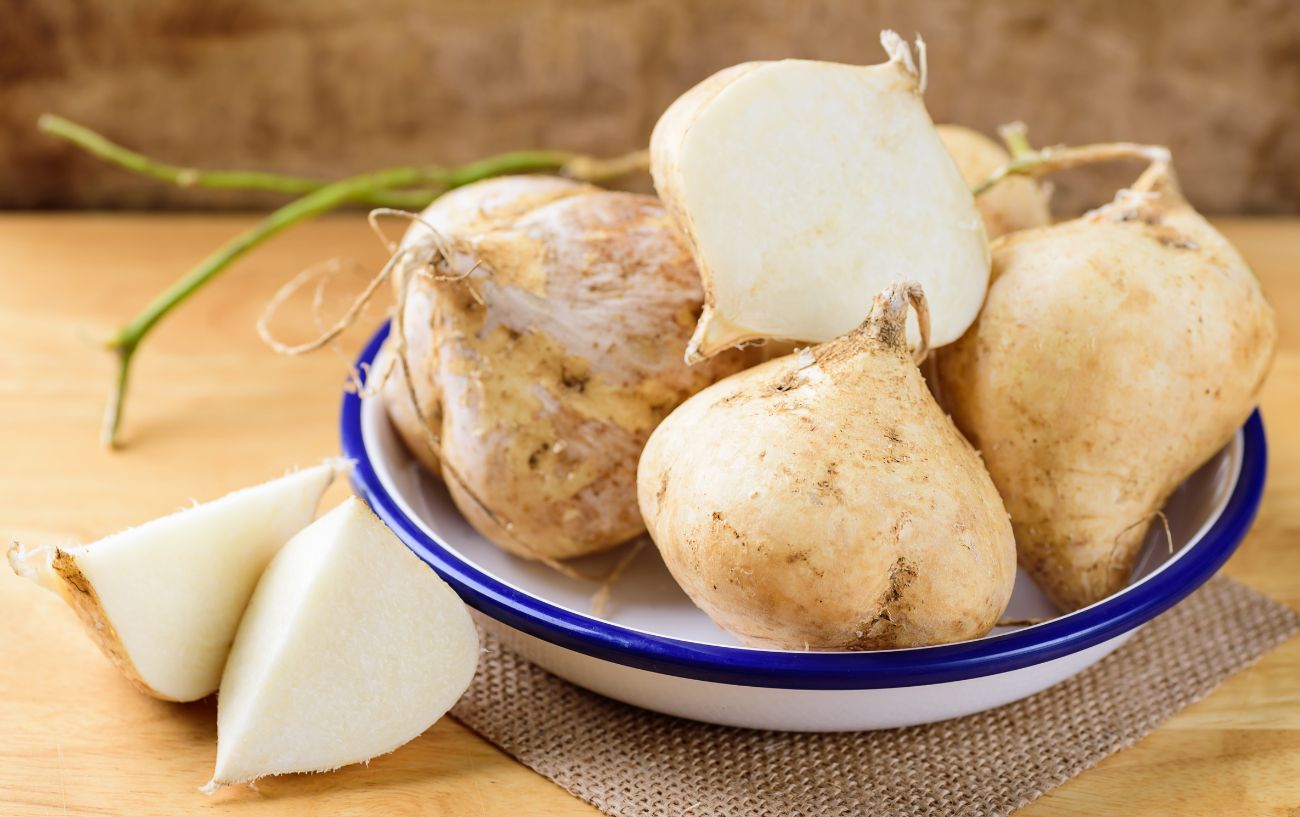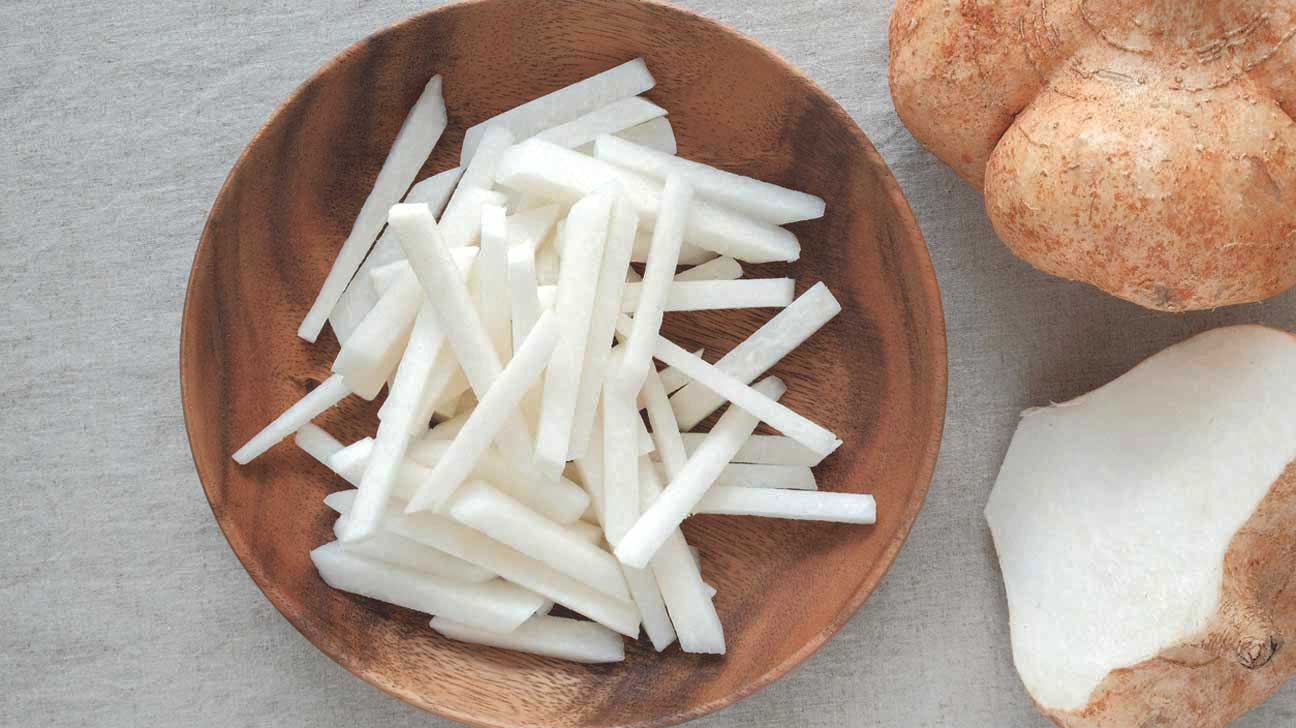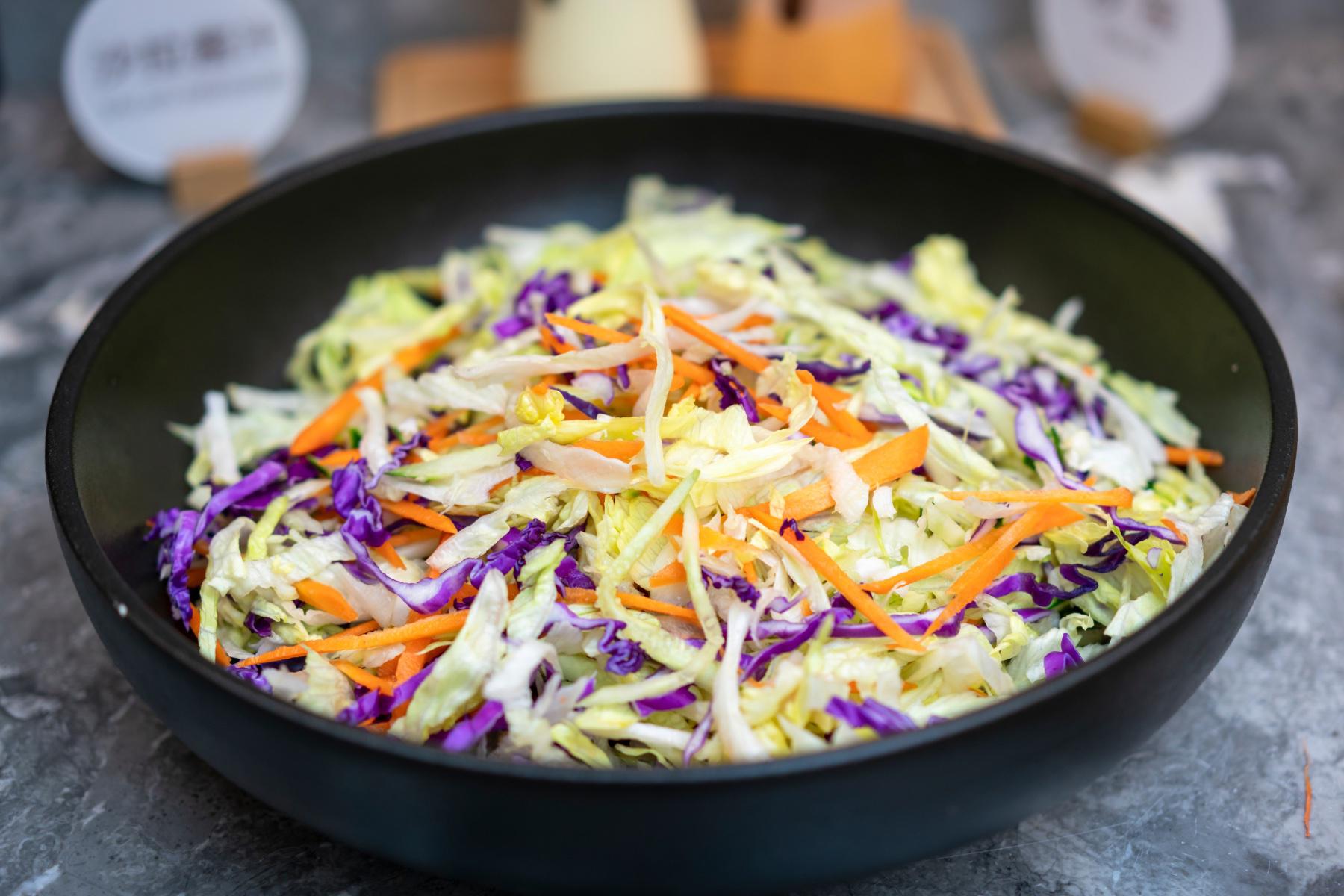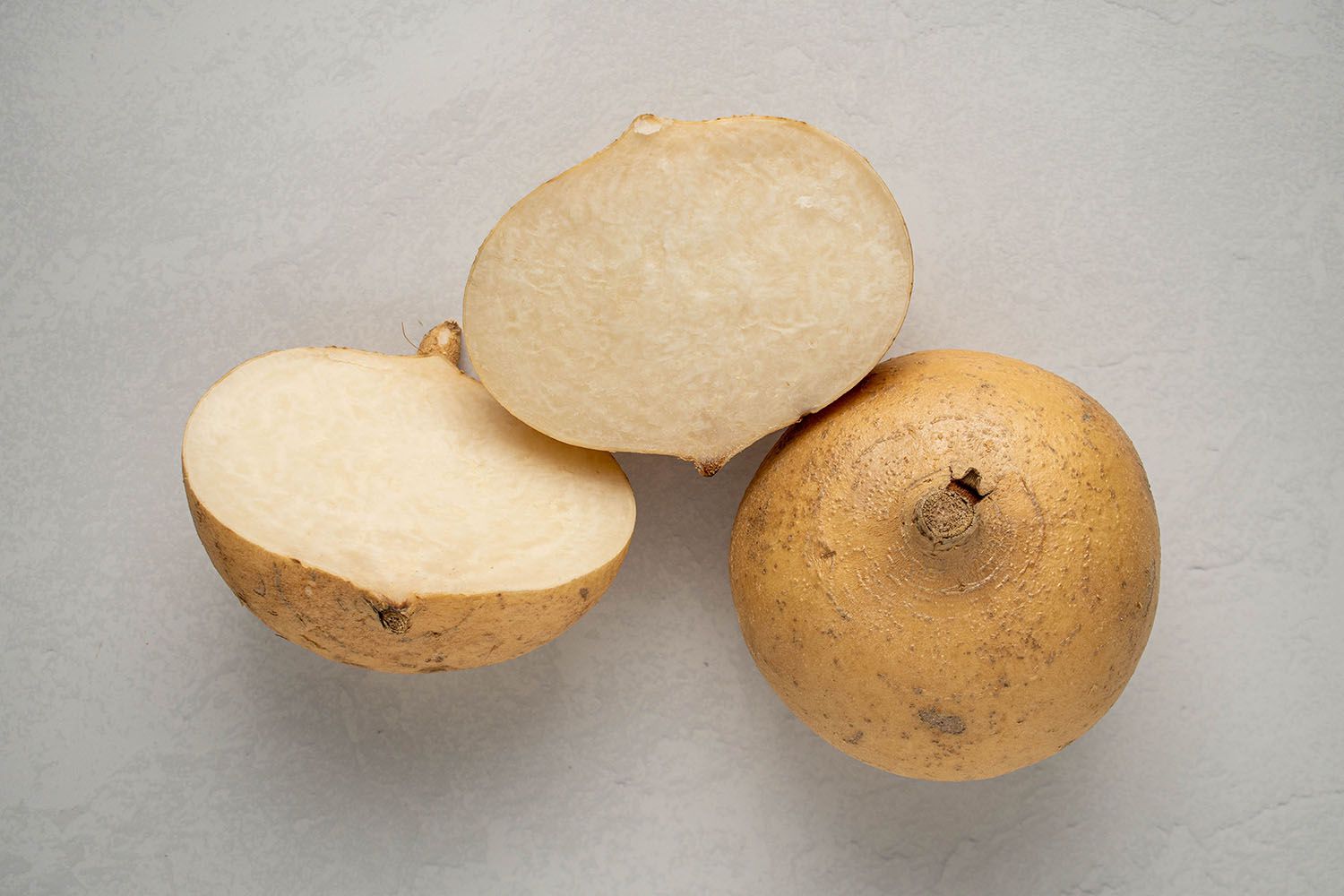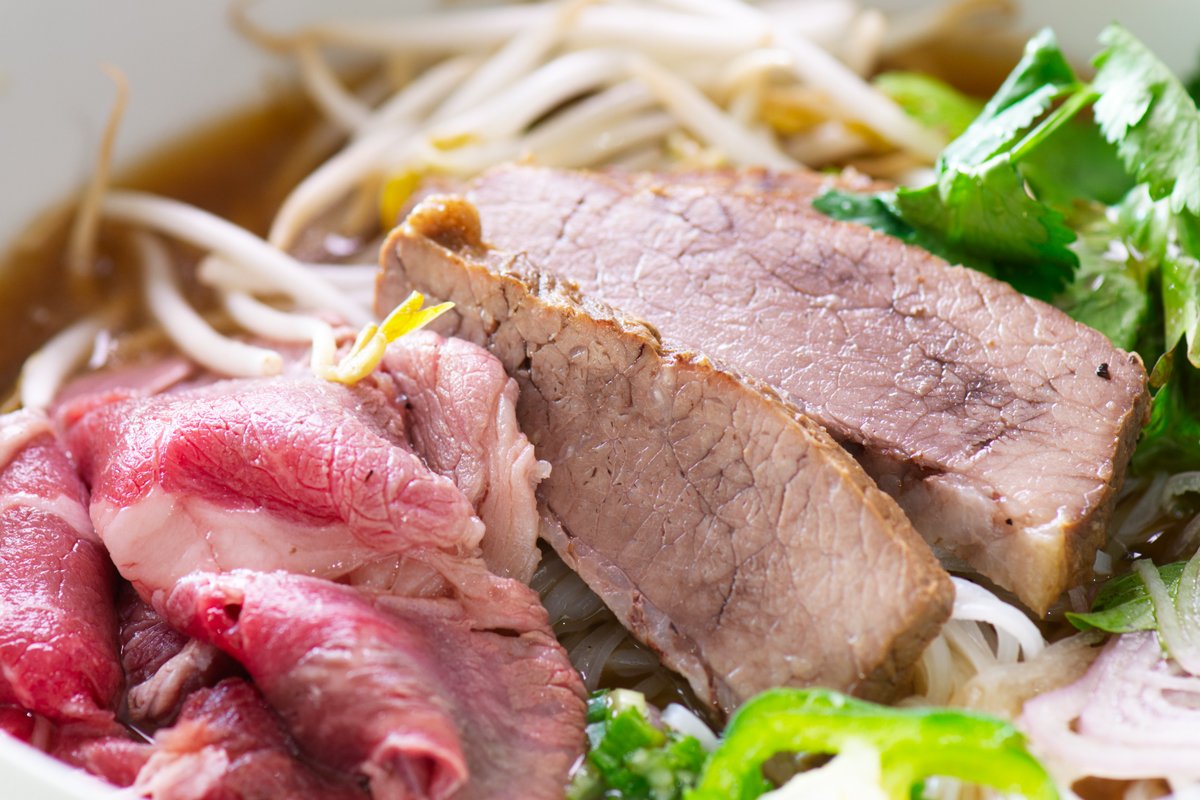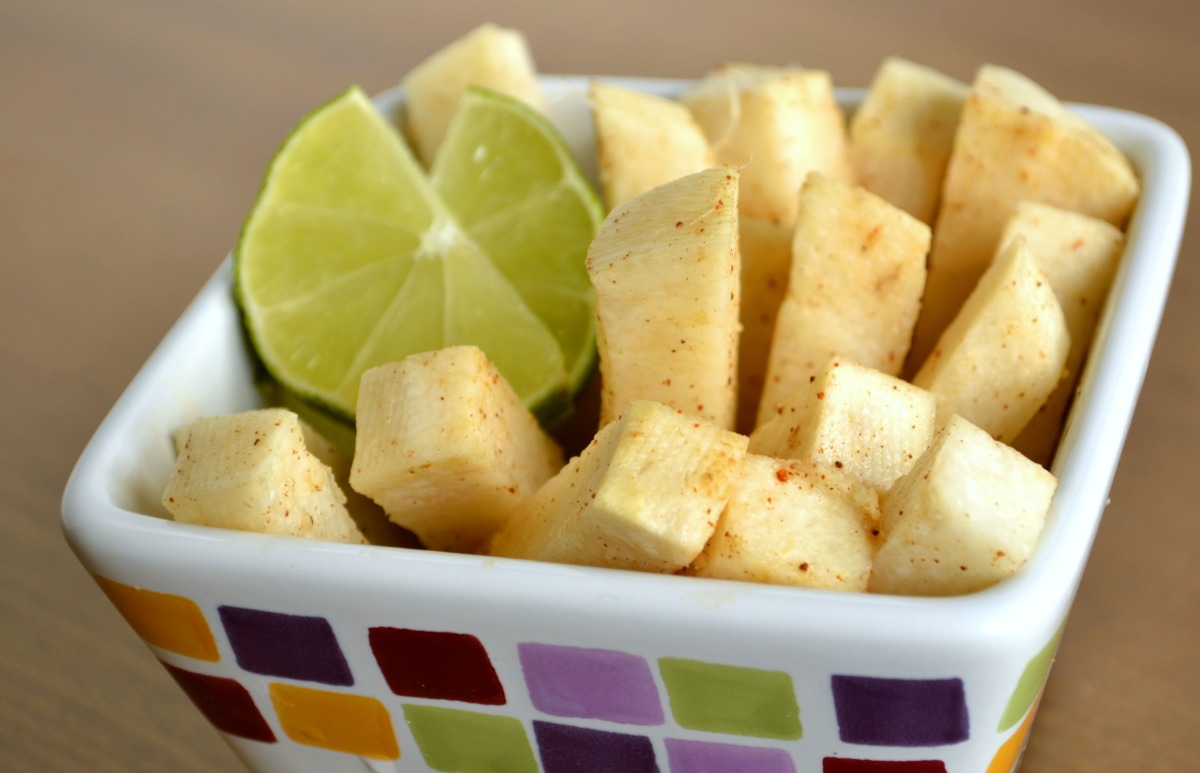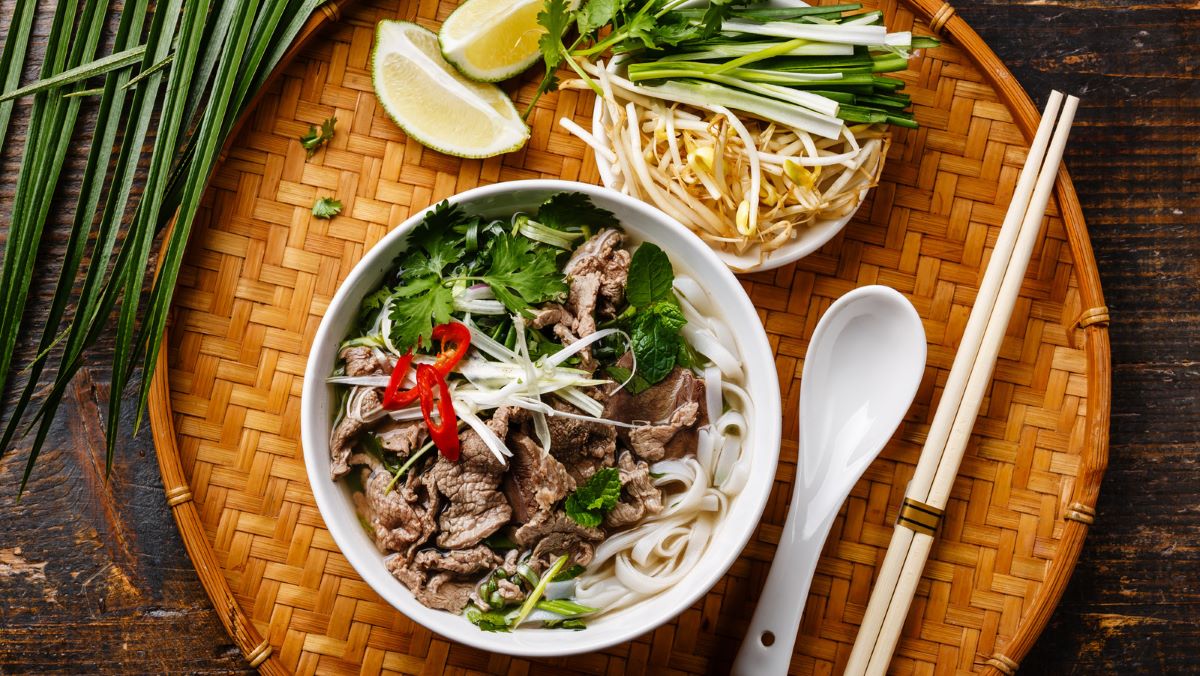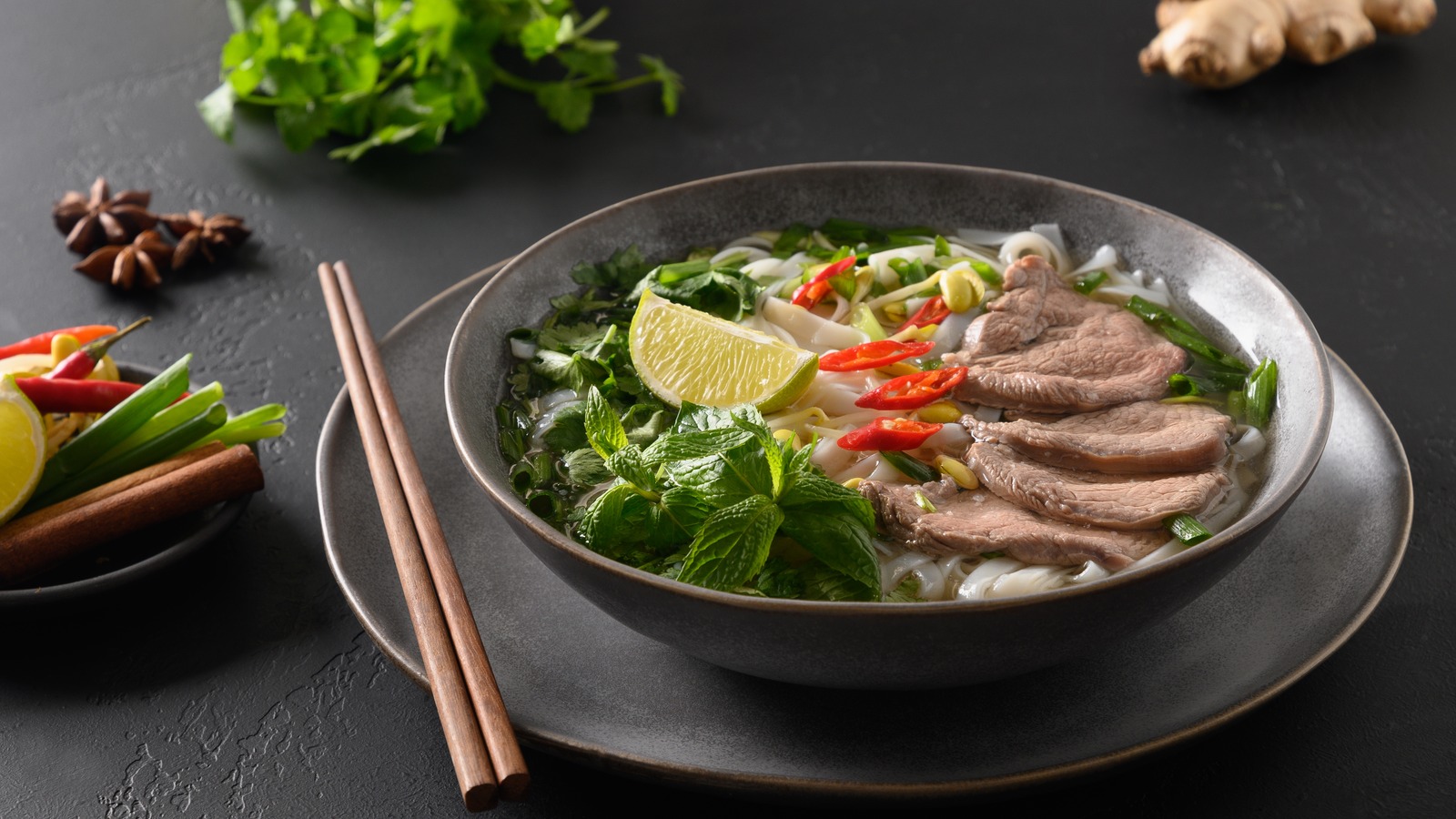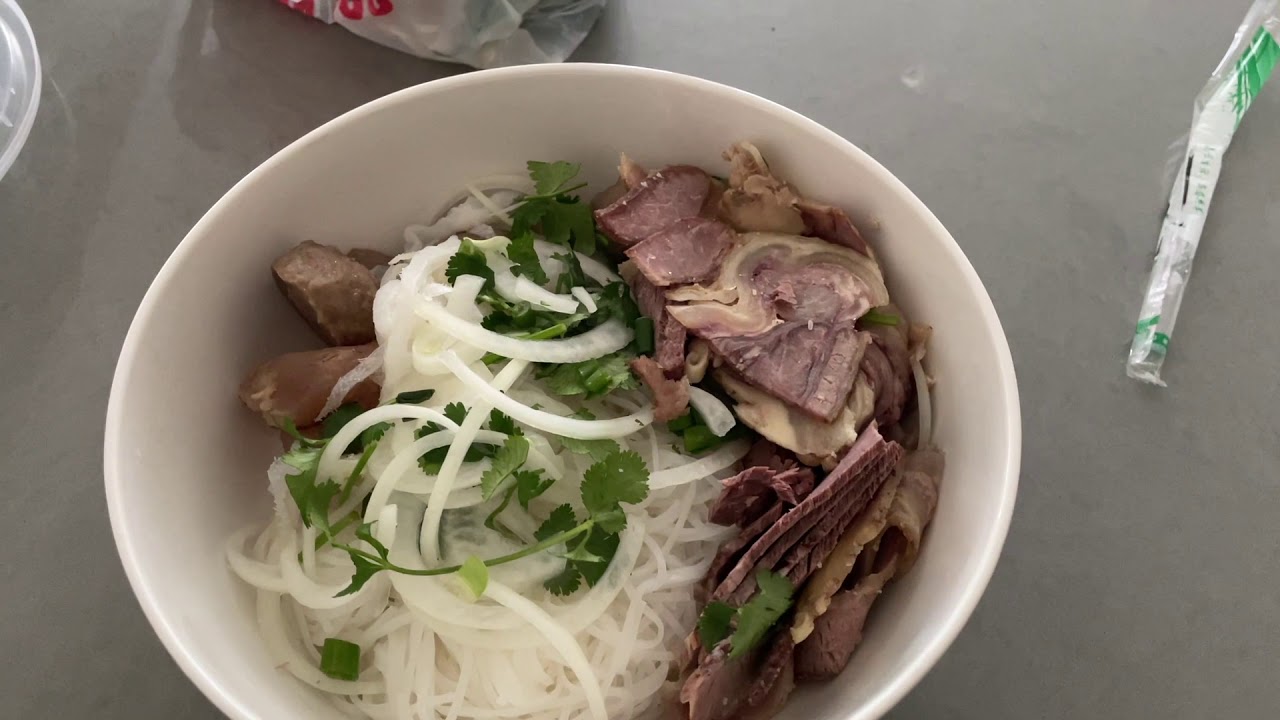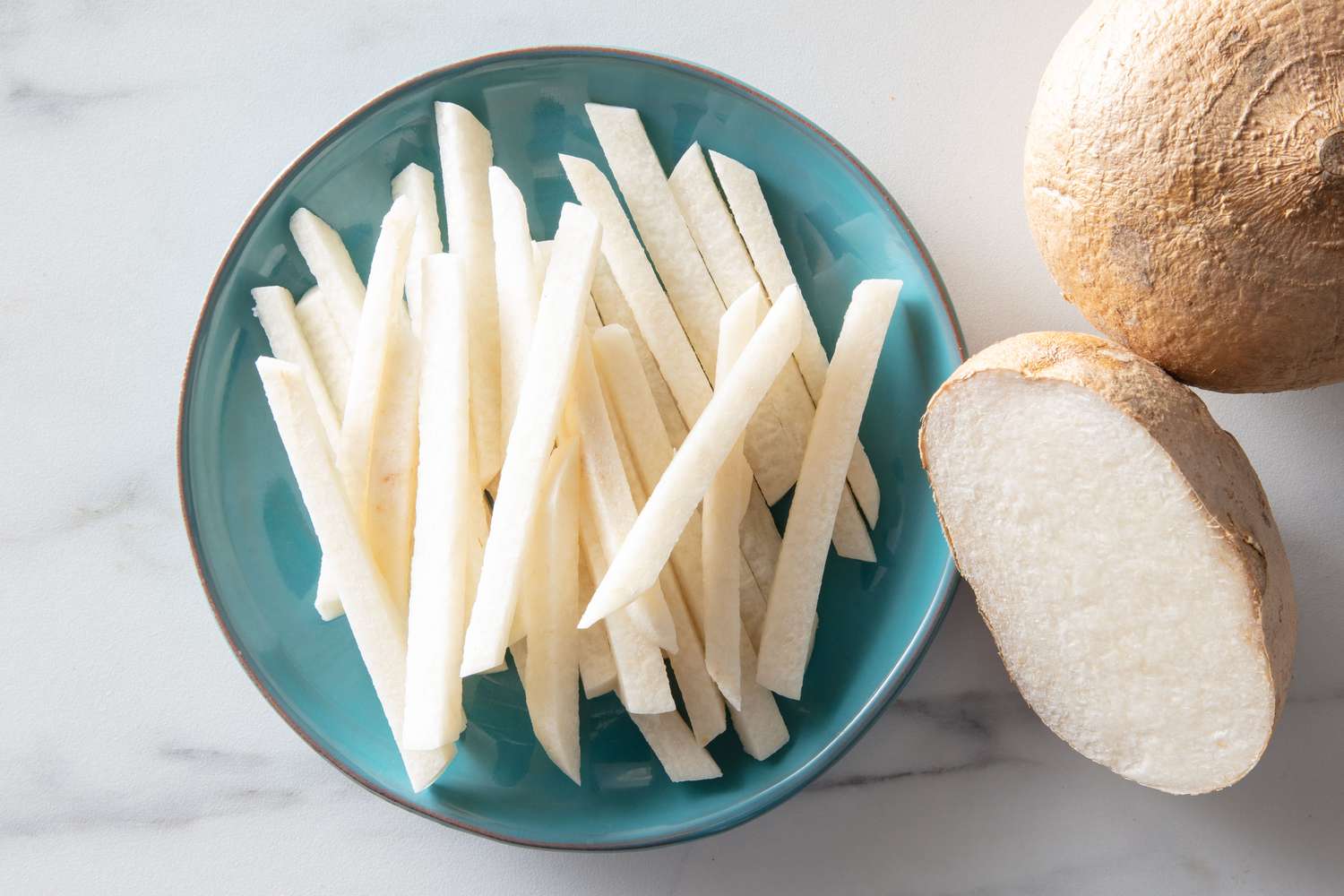Discovering the Delightful Jicama
Have you ever come across a large, round, brown root vegetable at the grocery store and wondered what it is? That’s probably jicama! This crunchy and slightly sweet vegetable is a popular ingredient in many Latin American and Asian dishes. If you’ve never tried jicama before, you’re in for a treat. Not only is it delicious, but it’s also packed with nutrients that can benefit your health.
Choosing the Perfect Jicama
When selecting jicama, look for ones that are firm, heavy for their size, and free from bruises or blemishes. The skin should be smooth and free from shriveling. Jicama can be stored at room temperature for up to a week, or in the refrigerator for even longer.
Preparing Jicama for Eating
Before you can enjoy jicama, you’ll need to peel it. Use a sharp knife to remove the tough, fibrous skin. Once peeled, you can eat jicama raw or cooked. Here are some delicious ways to enjoy this versatile vegetable:
Raw Jicama
Jicama is often enjoyed raw, either on its own or as part of a salad or slaw. Its crisp texture and slightly sweet flavor make it a refreshing addition to any dish. Here are a few ideas for enjoying raw jicama:
- Slice it into sticks and enjoy it with your favorite dip
- Add it to a fruit salad for a crunchy twist
- Grate it and toss it with lime juice, chili powder, and a sprinkle of salt for a zesty snack
Cooked Jicama
While jicama is delicious raw, it can also be cooked in a variety of ways. Try these cooking methods to experience a different side of jicama:
- Roast it in the oven with a drizzle of olive oil and your favorite seasonings
- Add it to stir-fries for a crunchy texture
- Boil or steam it until tender, then mash it like potatoes
Health Benefits of Jicama
Not only is jicama delicious, but it also offers a range of health benefits. It’s low in calories and high in fiber, making it a great choice for anyone looking to maintain a healthy weight. Additionally, jicama is a good source of vitamin C, which can help support a healthy immune system. It also provides important minerals like potassium and magnesium.
In Conclusion
Whether you enjoy it raw or cooked, jicama is a versatile and nutritious vegetable that can add a delightful crunch to your meals. Next time you’re at the grocery store, be sure to pick up a jicama and give it a try. You might just discover a new favorite ingredient to incorporate into your culinary repertoire!
